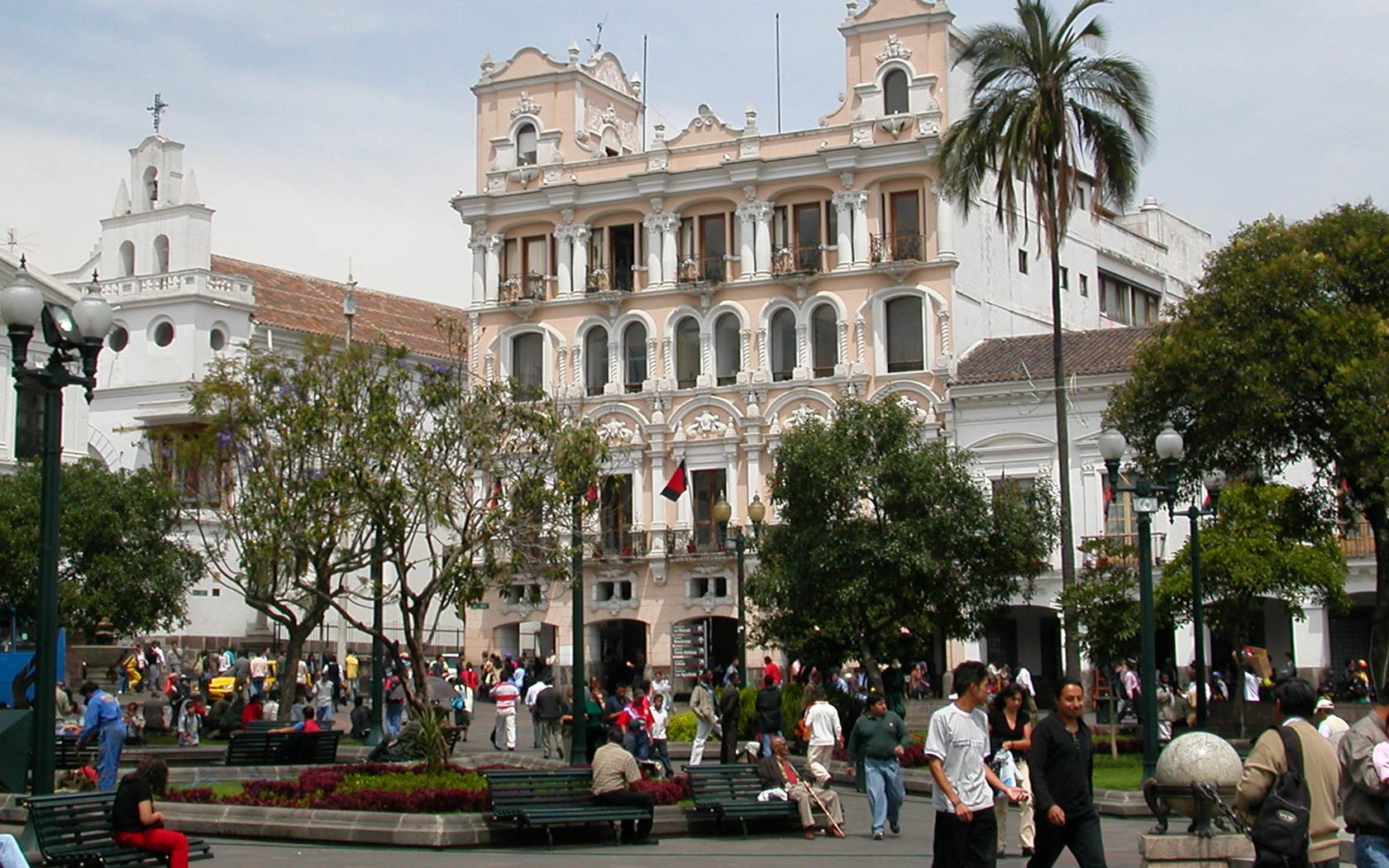Ecuador’s capital city Quito — like a microcosm of the entire nation — is jam-packed with tourist juiciness. While we don’t necessarily suggest you walk all over Ecuador (though you could try), this is certainly an option for a visit to Quito, especially if you want to take your time learning more about the city’s World Heritage-listed area, the Old Town, or Centro Hístórico, as its known in Spanish. But where do you start? Read our walking tour guide below to find out!
1. Santa Clara Church and Monastery
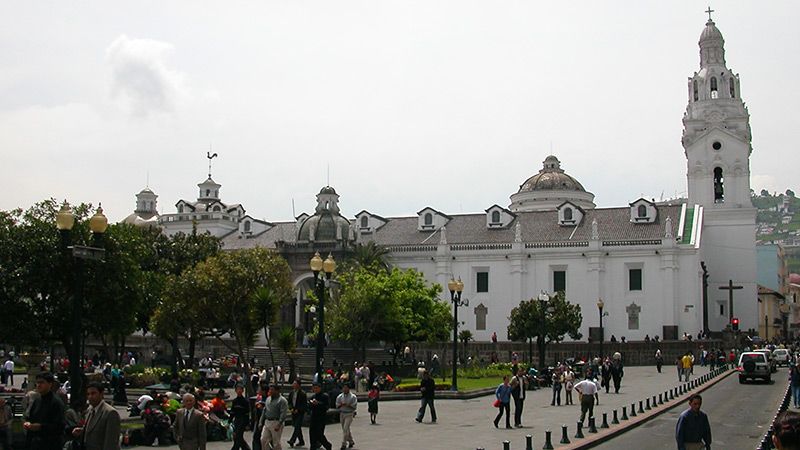
Start at Rocafort street. If your plan is to spend the afternoon walking through the Old Town and reach the barrio of La Mariscal for dinner or drinks in the evening, this is where to begin. The Santa Clara complex forms part of the 40 colonial churches and 16 convents in the Old Town. While the monastery is not open to the public, the church is small, humble example of early and restored Catholic architecture, worth a visit if only to compare it with the rest of the opulent architecture, art and design you’re about to discover through the cobblestone streets of Old Town Quito.
2. San Fransisco Monastery
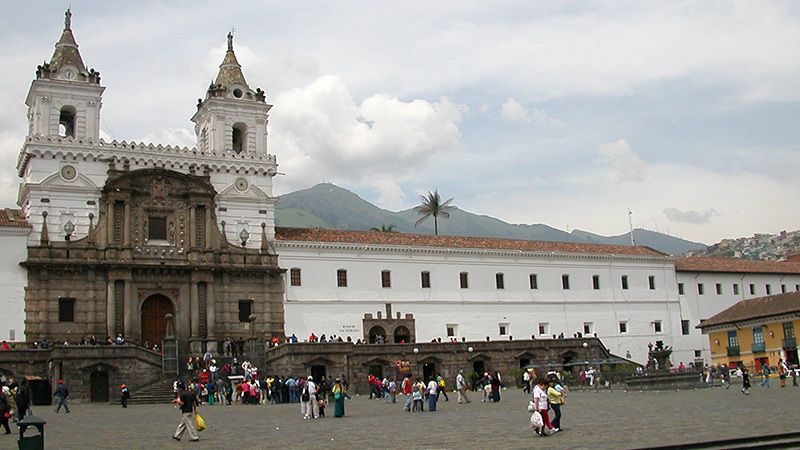
Turn up Quenca street, go one block. One of the Old Town highlights is the San Francisco Monastery, a 16th-century site that occupies 2 blocks (13-hectares) and contains a museum, chapel and convent, together forming the largest colonial complex of its kind in Latin America. The church was built in the 1570s in honor of Saint Francis, and was founded by Joedco Ricke, a missionary also known for having first sown wheat in Ecuador. Each element to the complex is open to the public, with major sites including the iconic Virgen de Quito painting and another 3,500 pieces of colonial art, the chapel and the 17th-century religious library.
3. La Compañía de Jesús
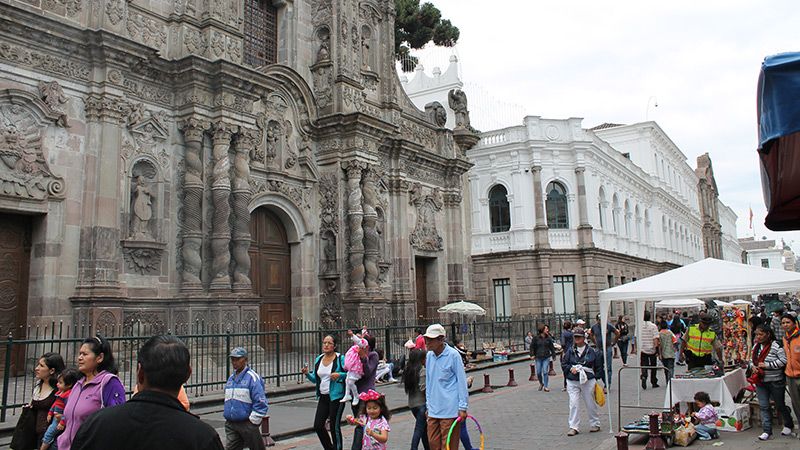
Walk one block down pedestrian street Antonio de Sucre. The Society of Jesus was founded in 1539 by a group of Jesuits, with their representation in Ecuador at the stunning La Compañía de Jesús complex in Quito. Its church, considered the most beautiful in Ecuador — and perhaps even in all of South America — features a façade made entirely of volcanic rock and — because they were Catholics through and through — an interior covered in gold leaf!
4. Independence Square
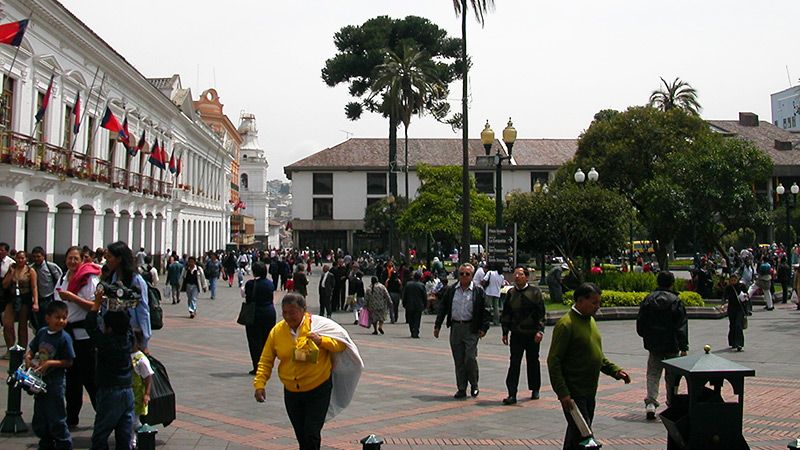
Walk one block up Garcia Moreno street. Quito was the site of the Primer Grito de Independencia, an anti-colonialist uprising in 1809, which triggered a series of similar events rights across the region until the full emancipation of Latin America from the Spanish crown. It’s at Plaza de Independencia where Ecuadorians remember their historic routes in the independence movement, with a looming independence monument that’s sat amongst the Spanish Catholic architecture which surrounds it.
5. One street, many sites
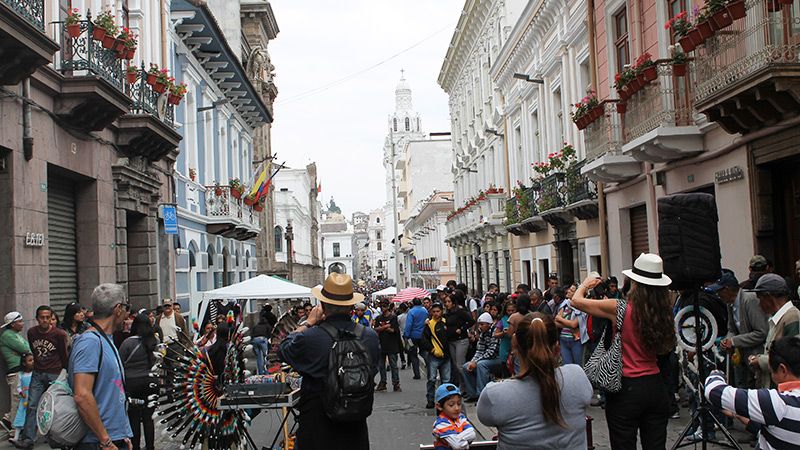
Turn left or right down Chile street. If you tend to take your time, Chile street is bound to occupy your whole afternoon. By turning left or right down Chile from Independence Square you’ll find four worthwhile sites: the Empresa del Centro Histórico, the Pasaje Arzobispal, the La Concepción church and monastery, and the Carondelet Palace, the majestic colonial building which has housed Ecuador’s executive power for generations. Note — the palace is accessible from the square itself.
6. Zigzag your way to La Mariscal
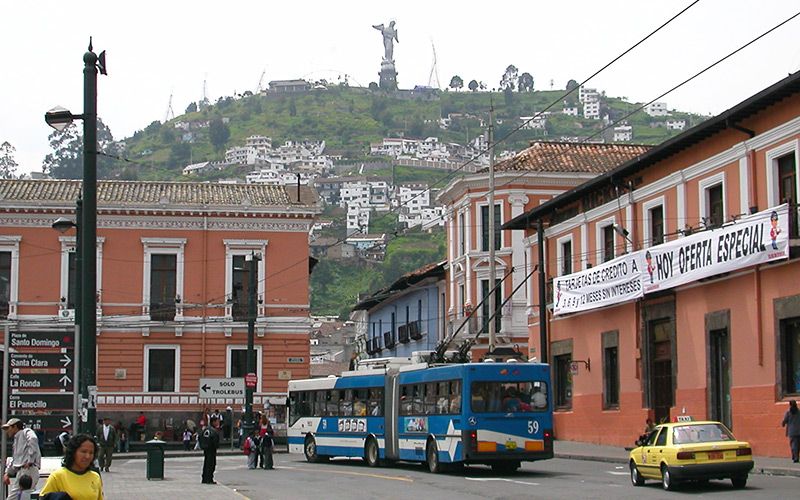
There’s so much to see in Quito’s Old Town, so don’t be surprised if you have to dedicate more than a day to it. With 4 and 5 streets either side of Independence Square, keep walking in the same direction, zigzagging your way towards La Mariscal. You’ll find museums, churches, plazas, and the insistently magical atmosphere of Quito’s Old Town, which will no doubt have you feeling like you’ve stepped back in time.
Find out more information about our Spanish School in Quito. You can also find the streets mentioned in the blog on this map!
Originally published on Ailola by Jayson McNamara on November 5, 2013.
